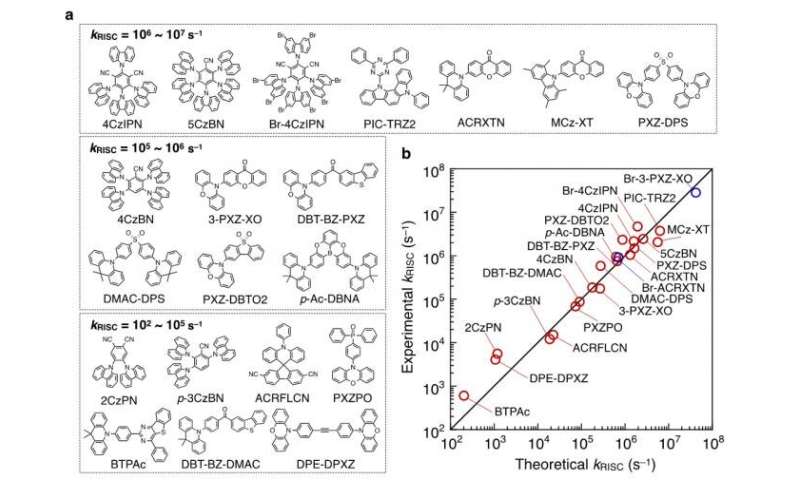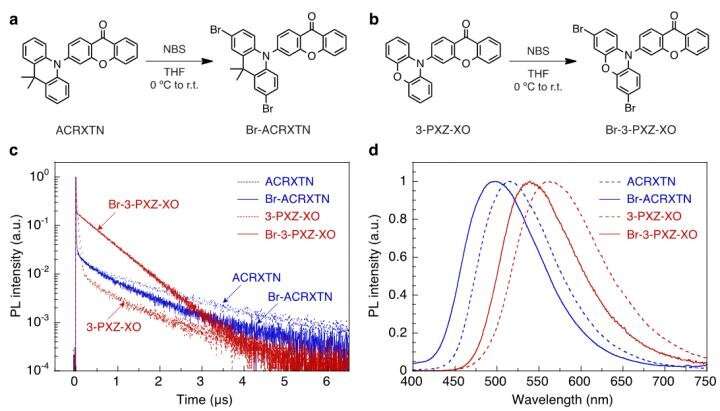Theoretical prediction of reverse intersystem crossing for organic semiconductors

A joint research team at RIKEN and Hokkaido University developed a method to predict rate constants of reverse intersystem crossing (RISC)associated with light emission efficiency of organic semiconductors used for organic light-emitting diodes (OLEDs) through quantum chemical calculations with computers.
Thermally activated delayed fluorescence (TADF) materials have been expected to be used for next-generation OLED materials. One of the challenges for the practical application of the materials is development of TADF materials with faster RISC. Our developed method has demonstrated accurate prediction of RISC rate constants for various TADF materials. Organic semiconductors designed based on this prediction method presented a high RISC rate constant of 1,0000,000 per second or higher. In the future, with materials informatics studies using this method in combination with machine learning, we would be able to establish theories and scientific principles, which would lead to drastic improvement in efficient virtual screening and device performance of OLED materials.
The research was conducted by Naoya Aizawa and Yong-Jin Pu, researchers at RIKEN Center for Emergent Matter Science (CEMS), Assistant Professor Yu Harabuchi and Professor Satoshi Maeda from Department of Chemistry, Faculty of Science, Hokkaido University and Institute for Chemical Reaction Design and Discovery (WPI-ICReDD), Hokkaido University under the research area: Advanced Materials Informatics through Comprehensive Integration among Theoretical, Experimental, Computational and Data-Centric Sciences of the JST the Strategic Basic Research Program PRESTO.
-

Figure 1. TADF materials examined in this study and their RISC rate constants (kRISC). a Molecular structures of the examined TADF materials categorized by their kRISC. b Comparison of the experimental and theoretical kRISC. Credit: Naoya Aizawa -

Synthesis and photoluminescence properties of the newly designed materials. a, b Synthetic routes to Br-ACRXTN (a) and Br-3-PXZ-XO (b). c, d Transient photoluminescence decays (c) and steady-state photoluminescence spectra (d) of ACRXTN, Br-ACRXTN, 3-PXZ-XO, and Br-3-PXZ-XO in a solid-state host matrix. Credit: Naoya Aizawa
More information: Naoya Aizawa et al, Kinetic prediction of reverse intersystem crossing in organic donor–acceptor molecules, Nature Communications (2020). DOI: 10.1038/s41467-020-17777-2
Journal information: Nature Communications
Provided by Japan Science and Technology Agency




















